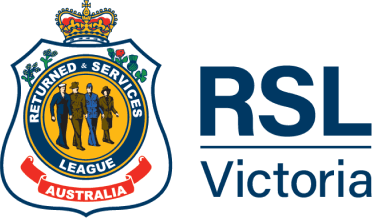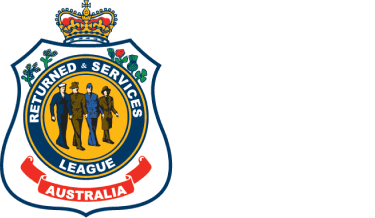Photography: Supplied
On 13 January 1910, Field-Marshal Lord Herbert Kitchener, then Commander-in-Chief of the British Army, visited Seymour.
Seymour’s citizenry turned out in force to welcome the British aristocrat when he stepped from a steam train following the 105-kilometre journey from Melbourne.
“The streets were gay with bunting, the usually quiet roads filled with crowds of sightseers of all ages, from grey-haired grandfathers to tiny toddlers,” reported Melbourne’s Table Talk magazine.
Kitchener – later made famous for the iconic 1914 British Army recruitment poster “Your country needs you!” – travelled to Australia in 1909 at the invitation of then prime minister Alfred Deakin to inspect the Commonwealth’s existing state of defence.
The Commonwealth of Australia was just eight-years-old when Kitchener arrived in Australia – prior to Federation in 1901 the six separate British self-governing colonies of Queensland, New South Wales, Victoria, Tasmania, South Australia and Western Australia were required to assume responsibility for their own defence.
In Victoria, the Victorian Mounted Rifles (VMR) was founded in 1885 with volunteer troops. Local VMR training began training at Goldies Paddock, part of an extensive cattle and sheep run known as “Marengo,” four-kilometres east of Seymour, the same year.
Seymour was considered an ideal site for military exercises because of its proximity to Melbourne; its hilly terrain, and its railway station, which opened in 1872.
Pre-Federation, as part of the British Empire, the Australian colonies offered troops for the second Boer War (1899–1902) in South Africa, and the first Australian troops arrived in Cape Town in December 1899.
An estimated 16,000 to 21,000 Australians fought in the Second Boer War, according to the Australian Boer War Memorial. Victoria sent 3,500 VMR officers and soldiers, many who had trained on the hills and plains around Goldies Paddock.
The Federation of Australia in 1901 was a major catalyst in the restructuring and central coordination of the embryonic Australian military forces.
In 1901, under the new constitution, the Australian Army was formed, and the VMR became part of the newly-formed Australian Light Horse.
Goldies Paddock was in use for military training by the time Lord Kitchener arrived at Seymour’s railway station in 1910.
“A long stream of motors and cabs labelled `Direct to the Camp’ stood outside the railway station,” reported Table Talk of Kitchener’s arrival in Seymour.
The famous soldier waved to the crowds as he boarded one of them to “Kitchener Camp,” which had been established at the Seymour Racecourse. Here around 4,000 soldiers and 2,000 horses assembled to take part in military manoeuvres to impress the British Field-Marshall.
When Lord Kitchener was appointed Secretary of State for War in 1914, his favourable views of the Seymour training area meant Seymour Camp was established as a major Army training centre in 1915, and the main Victorian training area for the Australian Light Horse.
The once-peaceful paddocks of “Marengo” became known as Seymour Camp, covered with hundreds of tents that would become temporary homes for thousands of Australian soldiers.

Seymour Camp was used as a training, holding, isolation, and overflow camp during the build-up of the Australian Imperial Force (AIF) - its role as an isolation camp was vital in stopping the spread of diseases such as viral meningitis, which swept through training camps such as Broadmeadows in 1915.
“It is wonderful; just like a huge city right on the slopes of the Great Dividing Range,” wrote a soldier reporting from Seymour Camp in the Port Fairy Gazette in August 1915.
“Sunday is a wonderful day out here. Thousands of people come out here from all parts. Five or six special trains leave Melbourne every Sunday. Fare 4s 6d. A visitor … would think he had wandered into a huge fair.”
“One part of the camp is reserved for amusements, stalls, shops and institutes (such as the YMCA and Salvation Army). There are several dentists … numerous pie and coffee stalls, grocers’ shops, photographers.”
At the time around 15,000 troops were training at the camp, some of the 416,809 Australians who enlisted to fight in World War One.
Of these, an estimated 334,000 served overseas, fighting in some of the most notorious battles of the war - the mud of Flanders, Fromelles at the Western Front, in the Somme Valley, the battle Passchendaele at Ypres, the equally disastrous Battle of Gallipoli.
The AIF sustained approximately 210,000 casualties in World War One. Of those who returned, many were forever changed by their experiences.
World War One was among the deadliest conflicts in history. The total number of both civilian and military casualties is estimated at around 37 million people.
It is difficult to imagine the organised chaos of Seymour Camp in 1915, hectic with excited young men hungry for adventure, as I stroll around part of the grounds, now known as the Light Horse Memorial Park, on a bright January morning: there is no sound but the warbling of magpies.
At the Bailey Bridge footbridge - ingenious portable bridges designed by British military engineers - which leads into the park, I meet Lesley Dalziel and Bruce Anderson, who were both instrumental in the founding of the Light Horse Memorial Park.
Lesley explains that the 150-hectares that comprises the current park is a relic of what was once a far bigger military camp.
“In 1921 the Seymour Military Camp was purchased by the Australian Government to be further developed as a training area for army troops,” she said.
“The camp also became extremely important during World War Two as a training and transit camp by both Australian and American forces. In fact, prior to the establishment of nearby Puckapunyal in 1939, it was Victoria’s largest training facility.”
During the 1960s, all military activity at Seymour Camp ceased. In 1979 the Commonwealth sold 180-hectares of the camp to the Shire of Seymour for a nominal sum, on the proviso the majority was retained for conservation and recreation.
“One of Australia’s most significant military sites became a dump of rubbish and old cars - it was a mess,” said Lesley.
In 1995, the idea of developing a larger area as a memorial park that would recognise the contribution made by the AIF, and particularly by the Australian Light Horse Regiments, was mooted, and in 1998 the Mitchell Shire Council established the Australian Light Horse Memorial Park.

The Council appointed a Committee of Management, with Seymour local the late Murray Smith as inaugural president. Murray’s role was particularly significant as he had served in the Second AIF and was a “Rat of Tobruk.” The committee’s current president is Murray’s son, Greg Smith.
Lesley Dalziel and Bruce Anderson were also inaugural committee members, and continue to volunteer today.
The management committee began the mammoth task of cleaning up the land, leaving important relics and ruins in place, and welcomed help from the Army. The park was officially opened in 2001 to coincide with the centenary of the Australian Army.
“Big things happened here,” said Bruce as we set off to explore the park.
“Thousands of young men on the cusp of adventure trained here before they were shipped off to the horror of war. The place still has the feeling of an abandoned army camp.”
We drive along gravel tracks and the remains of bitumen roads past the foundations of cook houses, amenities blocks, and a hospital.
“It was a harsh environment, and pretty primitive. Thousands of men living in tents, plenty of heat, floods, mud, dust, and bad food,” said Bruce.
“The park is an important pocket of the contained memories of earlier times. And I think it’s important that we try to understand those times.”
Interpretive boards are scattered throughout the park, and there are memorials such as that to John Yourn of Moonee Ponds and Hiram Scouller of Hamilton, who lost their lives here in 1931 while carrying out divebombing in a Westland A5-20 aircraft.
The highest point of the park is called Anzac Hill, and at the tip is a stone cairn with sweeping views across the hills. From here a network of paths lead to sites of military significance.
“The camp is situated on very high ground on a series of hill tops, and is very well drained,” wrote a young West Australian in the Seymour Express in 1917.
“The view is certainly most beautiful, with the long vista of land to the west and a range of hills to the east, with the lovely Goulburn River flowing between the higher and lower ridges.” Little has changed today.
The Light Horse Memorial Park is run entirely by volunteers. “Some council funding, donations and occasional grants helps keep the gates open,” said Lesley.
Bruce makes wooden bench seats, which are scattered throughout the park, where you can rest while taking in the history, the vistas, and the birdlife.
Birdlife is prolific in the park, with 112 species recorded, from Whistling Kite and Fan-Tailed Cuckoo to rare species including Hooded Robin and Barking Owl.
Plan a visit of at least several hours to walk around the park. A brochure that includes a map is available at the Seymour Visitor Information Centre at 47 Emily Street, Seymour.
If you have mobility issues and wish to explore the park by car, contact the Seymour Visitor Information Centre. For further information visit www.lighthorsepark.org.au.

